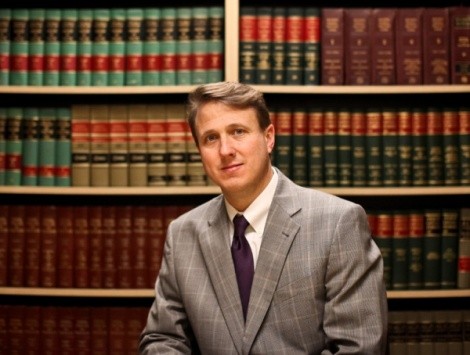On May 21, 2010, at 11 p.m., officers from South Salt Lake Police Department and the Utah Highway Patrol set up traffic cones in the rain to stop traffic at a checkpoint at 250 West 3300 South. Over the next four hours, six drivers were arrested for alcohol impairment.
When defense attorney Charles Stewart represented one of the six defendants before South Salt Lake Justice Court Judge Catherine M. Johnson in September, he argued that the checkpoint was unlawful, later noting in a motion that his client—a 24-year-old man who had told the arresting officer he had been drinking—was “illegally seized and detained.” Johnson, as required by state statute, had authorized the administrative traffic checkpoint operation plan and procedures, which was submitted by South Salt Lake Lt. Glenn Smith. Johnson told Stewart she would bring in another judge to deal with his motion.
In a Nov. 23 ruling, Riverton Justice Court Judge Gregory Bown agreed with Stewart, describing the plan as “constitutionally infirm.” It provided officers, he wrote, the authority “to stop and search whomever, whatever and wherever and for as long as they want.” Bown ordered evidence from the stopping of the defendant suppressed and South Salt Lake subsequently moved to dismiss Stewart’s client’s DUI charge.
Through 3rd District Court press officer Nancy Volmer, Johnson indicated “she followed the statute that outlines the procedures on checkpoints.” Johnson acknowledged that a reversal on a decision is an inevitable part of a judge’s career.
The South Salt Lake checkpoint plan not only gave officers the discretion to pull over and hold any driver they chose, but also, as Stewart noted in his motion to suppress, used language that “is almost identical” to that used in roadblock plans ruled unconstitutional by the Utah Supreme Court in 2000 and 2003.
The similar language included instructions to officers noting, “This administrative checkpoint is a driver’s license and registration check,” while also including a laundry list of criminal and traffic violations to check for, among them alcohol impairment, safety inspections and serving of outstanding warrants.
A checkpoint, according to federal and state statute, has to have a specific focus, such as looking for drunken drivers or checking for seat belt violations. Checkpoints with multiple purposes, however, resemble, as in the South Salt Lake plan, Stewart says, “a trawling expedition, a huge net.”
South Salt Lake city attorney Lyn Creswell, however, describes the plan as “pretty typical, not out of the ordinary.” When mistakes are made, “you learn from them and move forward,” he says.
In assessing checkpoints, “the court does a balancing act of public-policy benefit versus intrusion and the inconvenience of the driving public,” Stewart says. Utah state statute requires that for a checkpoint plan to pass judicial muster, it must minimize four factors: length of a motorist’s delay, intrusion upon his or her privacy, the level of fear it might give rise to for a driver, and the discretion of law enforcement. Bown ruled that not only did the plan give officers “unfettered discretion to enforce checkpoint purposes” that night, it failed to show “that each element of the purposes [of the plan] serve the limited, singular purpose of promoting the safe use of the highways.”
Provo-based attorney Stephen Frazier, who has represented defendants ensnared by checkpoints, says while checkpoints in Utah County may be done under the guise of “protecting society, ultimately, it’s a shakedown,” where officers want to see “how many DUIs I can get, let’s see who we can bust.”
But while some DUI attorneys argue checkpoints are primarily revenue generators, others characterize them as PR-driven in a state where legislative foes of alcohol consumption are plentiful. Stewart calculates the May 2010 four-hour checkpoint would have generated around $20,000 from outstanding warrants and various violations. But with 23 officers from South Salt Lake Police Department and the UHP working that night, along with two incident-management trucks, how profitable those four hours were is debatable.
When it comes to DUIs, Stewart argues, “the normal rules of engagement” for law enforcement “often don’t apply.” Whether it’s overly broad checkpoints or pretext stops, where officers follow customers leaving a bar for several miles until the driver makes a mistake and they are pulled over, Stewart laments, “in the name of preventing or curbing driving under the influence, constitutional protections are simply not done with the same rigor you’d see elsewhere in the law.”
